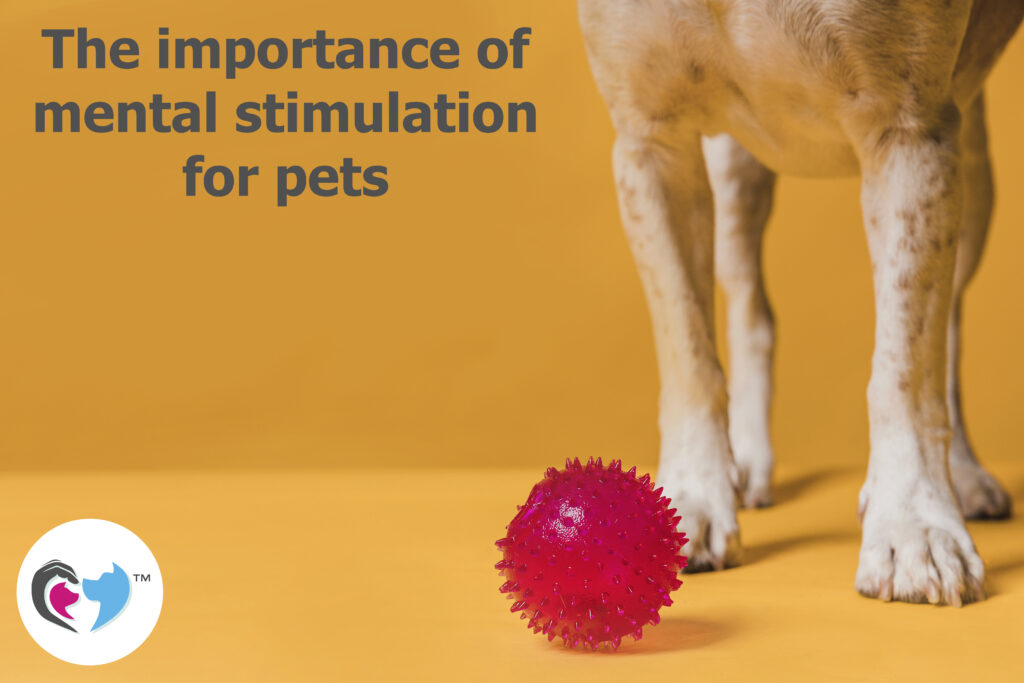In the dynamic world of pet care, addressing the physical needs of our animal companions is only part of the equation. As responsible pet owners and enthusiasts, we must recognize and prioritize the mental well-being of our beloved pets. This brings us to the crucial concept of mental stimulation – a key element in ensuring that our pets lead fulfilling, enriched lives.
Cognitive Health and Development:
Like humans, pets benefit from mental exercise to keep their brains sharp and active. Engaging in mentally stimulating activities helps improve cognitive functions, enhance memory, and promote problem-solving skills (1). This is particularly important for young pets, as it contributes to their overall cognitive development. This does not however mean that it is only limited to younger pets. Providing the right kind of stimulation, congruent with the life stage of an animal, can enhance cognitive abilities regardless of age.
Behavioural Challenges and Enrichment:
Mental stimulation plays a crucial role in preventing and addressing behavioural challenges in pets. Boredom and lack of mental engagement can lead to destructive behaviours, excessive barking, and other stress-related problems (2). Providing enrichment activities not only alleviates boredom but also enhances our pets’ overall quality of life. There is a catch, though – enrichment needs to be suitable for the individual animal; like everything else in the animal world, there isn’t a ‘one size fits all’ program. Individual variation dealing with likes, dislikes, wants, and needs plays a role in what an animal will enjoy as enrichment. At COAPE we use the MHERA protocol to address emotional needs. This encompasses looking at the animal’s hedonic budget and emotional assessment and finding ways to improve their wellbeing through various changes. MHERA is the perfect tool to find out what an animal’s needs are, and where changes for the better can be made.
Reducing Stress and Anxiety:
Pets, like humans, can experience stress and anxiety. Mental stimulation helps create a positive outlet for excess energy, reducing stress levels and promoting a sense of calm (3). Puzzle toys, interactive games, and varied activities contribute to a balanced and stress-free environment for our furry friends.
Preventing Cognitive Decline in Aging Pets:
Mental stimulation benefits the young and plays a crucial role in maintaining cognitive function in ageing pets (4). Engaging in mentally challenging activities can slow down the cognitive decline associated with ageing, keeping our senior pets alert and content. It is a cornerstone in the holistic care of our pets. By actively incorporating mentally enriching activities into their daily routines, we address their cognitive needs and strengthen the bond we share with them.
Puzzle toys (interactive toys that dispense treats when manipulated, encouraging problem-solving), scent games (Hide treats or toys around the house or in the backyard, letting them use their keen sense of smell to find them), and even training sessions are excellent examples of mental stimulation for Dogs. Regularly rotate their toys to keep them novel and interesting, preventing boredom.
For Cats, engage in interactive play with feather wands or other toys to mimic hunting behaviours, provide cat shelves or trees to allow climbing and exploration, offering mental and physical stimulation, and simple items like paper bags or boxes can become sources of entertainment as cats explore and hide.
For small pets like rabbits, rats and hamsters, provide tunnels and hideouts for exploration and security, offer a variety of safe chew toys to keep their teeth healthy and minds active, set up mini obstacle courses using tunnels, ramps, and platforms or even change the layout of their enclosure periodically to create a sense of novelty.
As responsible pet owners, let’s commit to providing a stimulating environment that promotes the mental well-being of our beloved companions, ensuring they live happy, healthy, and fulfilled lives.
References:
- Overall, K. L., Dyer, R. L., & Messam, L. L. (2011). Enhancing the physical and mental health of pets: The importance of companionship. Journal of the American Veterinary Medical Association, 238(7), 915-921.)
- Horowitz, D. (2009). Inside of a Dog: What Dogs See, Smell, and Know. Scribner.
- Beerda, B., Schilder, M. B., Van Hooff, J. A., De Vries, H. W., & Mol, J. A. (1998). Behavioural, saliva cortisol and heart rate responses to different types of stimuli in dogs. Applied Animal Behaviour Science, 58(3-4), 365-381.
- Salvin, H. E., McGreevy, P. D., Sachdev, P. S., & Valenzuela, M. J. (2011). The canine cognitive dysfunction rating scale (CCDR): A data-driven and ecologically relevant assessment tool. Veterinary Journal, 188(3), 331-336.





